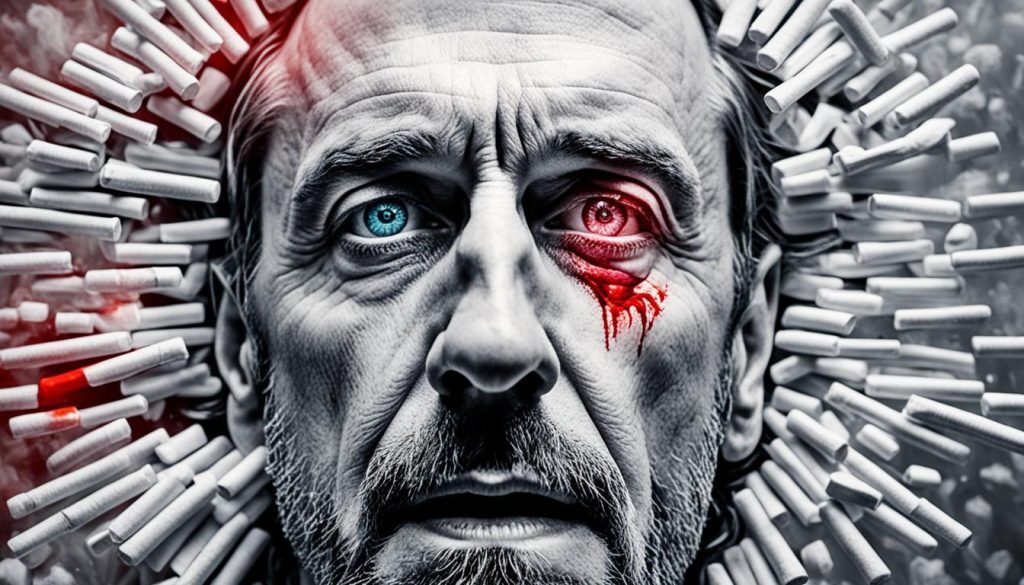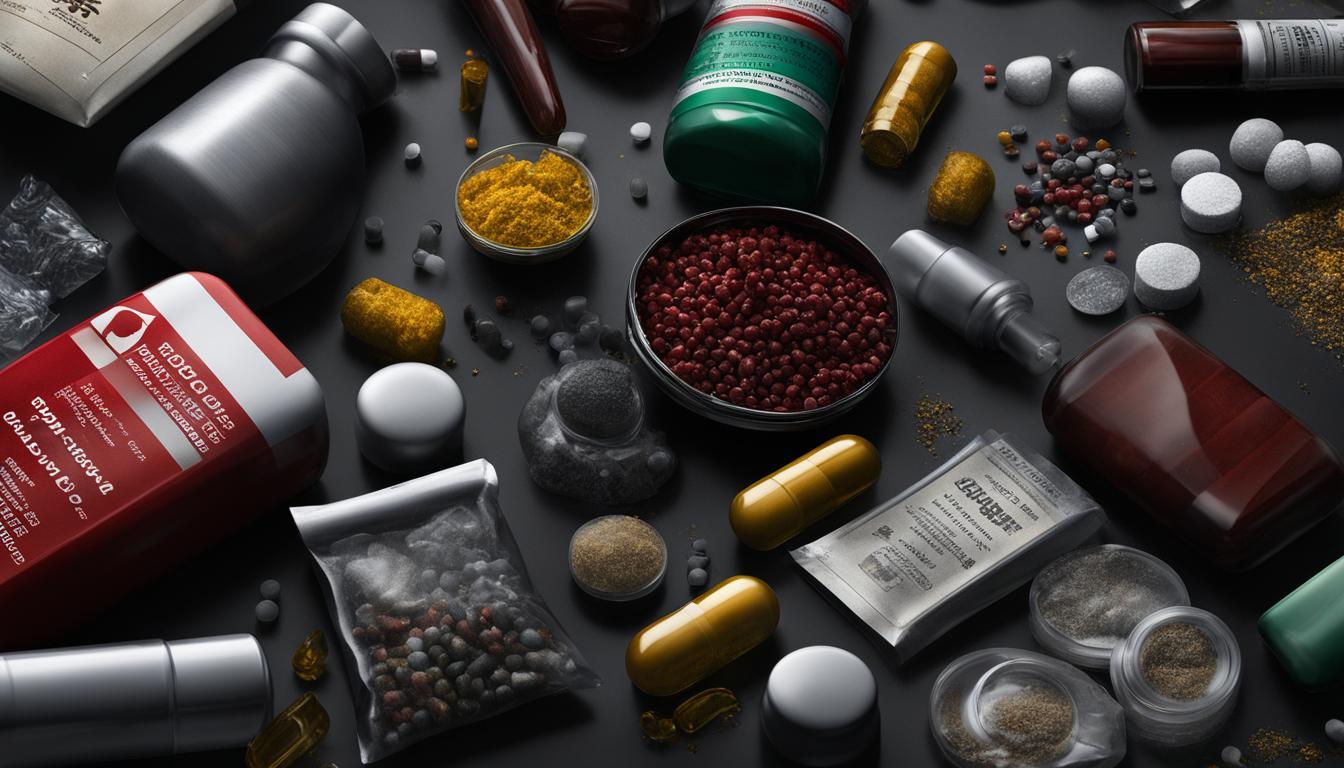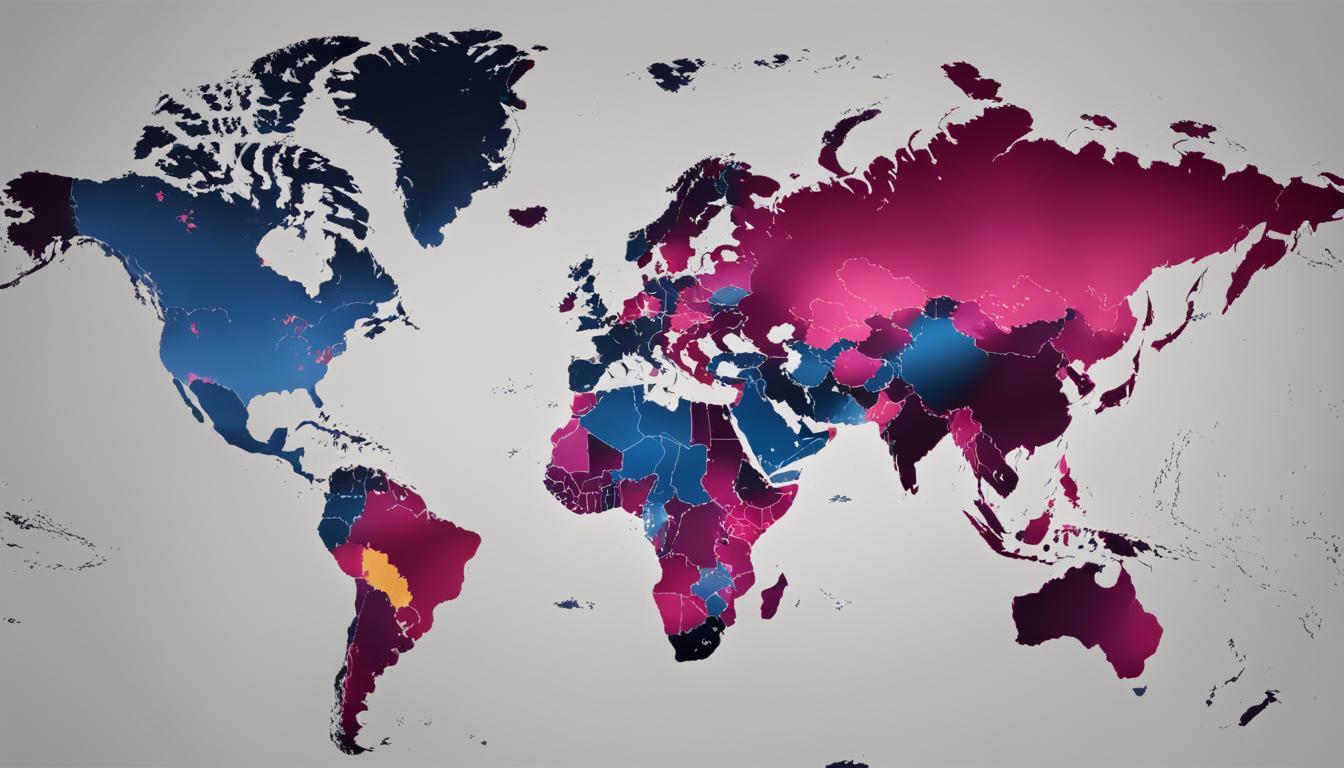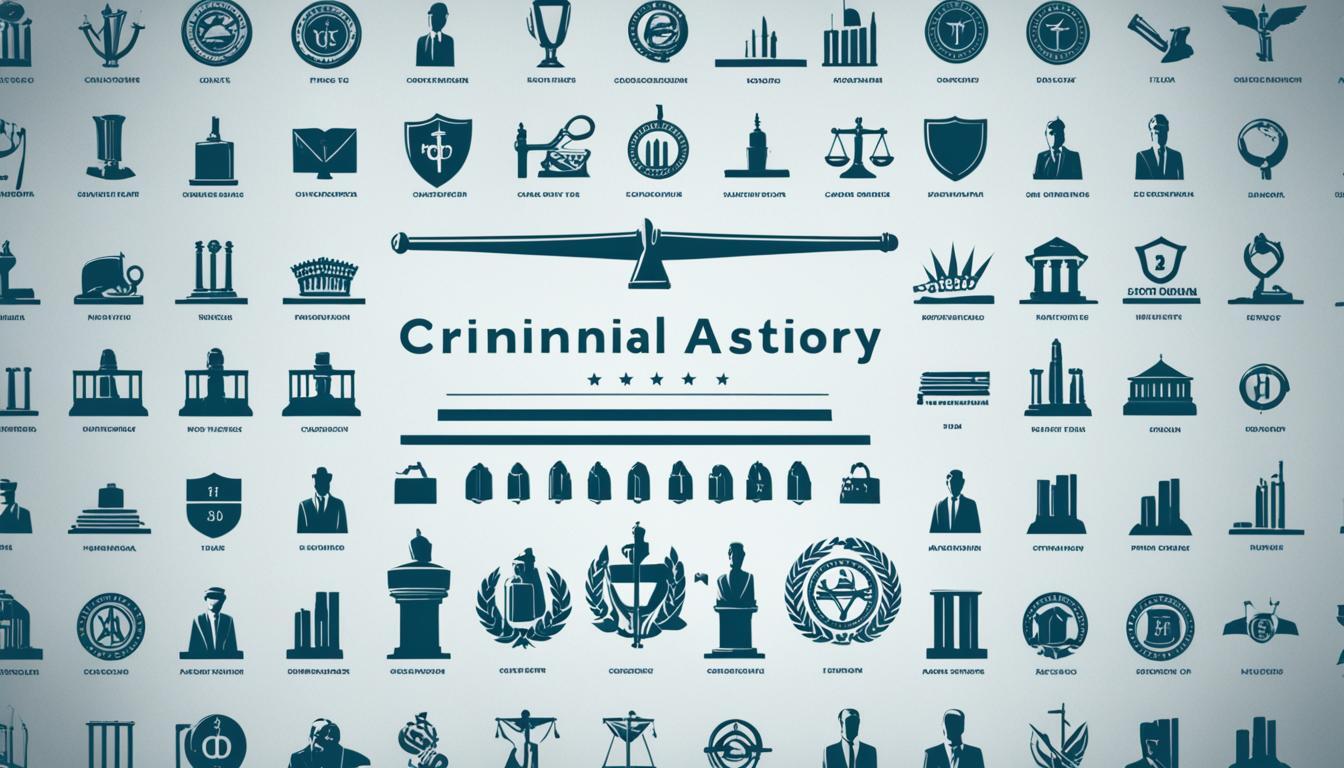Is Crack an Opioid? Understanding Drug Classifications
Did you know that crack cocaine is not classified as an opioid? Contrary to popular belief, crack falls under the category of psychostimulants, not opioids. While both crack and opioids are associated with drug addiction and substance abuse, they belong to different drug classes with distinct effects on the body and mind.
Key Takeaways:
- Crack cocaine is not an opioid but a psychostimulant.
- Crack stimulates the central nervous system, producing effects such as euphoria, paranoia, and increased heart rate.
- Understanding the difference between crack and opioids is crucial for effective addiction treatment.
- Crack cocaine use can have severe short-term and long-term effects on mental and physical health.
- Professional addiction treatment is essential for overcoming crack addiction and addressing the associated risks and dangers.
Crack vs. Opioids: Understanding the Difference
When it comes to drug classification, crack and opioids belong to different categories. Crack is categorized as a psychostimulant, while opioids are classified as depressants. This differentiation is important to understand the effects and addiction treatment strategies for each substance.
Opioids, which include drugs like oxycodone and heroin, have calming and sedating effects on the central nervous system. They work by binding to opioid receptors in the brain, relieving pain and producing a sense of relaxation. In contrast, crack and other psychostimulants produce a sense of energy and euphoria by stimulating the central nervous system.
Crack cocaine, a potent form of cocaine, is known for its immediate and intense effects. It is typically smoked, delivering a large amount of the drug directly to the lungs. The effects include increased energy, heightened alertness, paranoia, and an intense sense of well-being.
Understanding the difference between these drug classes is crucial for effective addiction treatment. Treatment approaches for crack addiction will differ from those for opioid addiction due to the distinct mechanisms of action and effects on the body. Addressing the specific challenges and needs of individuals struggling with crack or opioid addiction can help guide treatment professionals in developing personalized and targeted recovery plans.

Crack vs. Opioids: A Comparison
| Drug Class | Effects | Addiction Treatment |
|---|---|---|
| Crack (Psychostimulant) | – Energy and euphoria – Increased heart rate – Paranoia – Heightened alertness | – Residential treatment programs – Outpatient programs – Therapy – Medication-assisted treatment |
| Opioids (Depressant) | – Pain relief – Relaxation – Sedation – Respiratory depression | – Medication-assisted treatment – Opioid replacement therapy – Inpatient detoxification – Therapy |
The Effects of Crack Cocaine
Crack cocaine, a powerful psychostimulant substance, has immediate and immense effects on the body due to its method of administration. When crack is smoked, it rapidly delivers a large quantity of the drug to the lungs, leading to an intense euphoric effect. The short-term mental effects of crack include increased energy, heightened alertness, feelings of paranoia, and a sense of well-being. Physically, crack cocaine can cause symptoms like dry mouth, elevated heart rate, restlessness, and heightened senses.
It’s important to note that the use of crack cocaine can have severe consequences for both mental and physical health. Prolonged use of crack can lead to serious mental health issues such as anxiety, depression, and psychosis. Additionally, it can have detrimental effects on physical health, including respiratory problems, cardiovascular issues, and gastrointestinal complications.
Individuals who engage in crack cocaine abuse are at a higher risk of experiencing harmful effects, as the drug can rapidly progress to addiction. Substance abuse treatment programs are crucial in mitigating the physical and mental health consequences associated with crack cocaine use. Seeking professional help and engaging in comprehensive addiction treatment can significantly improve an individual’s well-being and increase the chances of long-term recovery.

Crack cocaine not only affects the individual using it but also has a broader impact on society. The harmful effects of crack extend beyond the immediate physical and mental health consequences, contributing to increased rates of crime, violence, and socioeconomic disparities.
Understanding Crack Cocaine Production
Crack cocaine, a highly addictive illicit drug, is produced through a relatively straightforward conversion process. The process involves dissolving powdered cocaine in a mixture of water and either ammonia or baking soda. The mixture is then boiled to remove the water, resulting in the formation of a solid substance. This solid substance is broken into rocks or chunks, which are commonly known as crack cocaine and are sold for illicit use.
The ease and affordability of crack production contribute to its widespread availability and abuse. The ingredients required for the production of crack cocaine are relatively inexpensive and easily accessible, making it a lucrative business for illicit drug manufacturers. This accessibility poses a significant challenge in controlling the supply and addressing the issue of drug abuse.
It is crucial to understand the process of crack cocaine production to gain insights into the challenges associated with drug abuse and illicit drug manufacturing. By addressing the root causes and implementing effective strategies, we can collectively work towards reducing the production and availability of crack cocaine, thereby curbing drug abuse and its harmful consequences.
The Risks and Dangers of Crack Cocaine
Crack cocaine use carries various risks and dangers. Addiction to crack can develop rapidly, especially when smoked, leading to physical and psychological dependence. The harmful effects of crack are numerous and can have long-lasting consequences.
- Respiratory problems: Smoking crack cocaine can cause acute respiratory problems, including shortness of breath, persistent coughing, and lung trauma. These respiratory issues can range from mild discomfort to severe complications.
- Cardiovascular risks: Crack cocaine use can significantly increase heart rate and blood pressure, putting users at risk of cardiac arrest, heart attacks, and strokes. The combination of the stimulating effects of crack and its impact on the cardiovascular system can have severe consequences for the user’s health.
- Aggressive and paranoid behavior: Crack cocaine smoking can lead to aggressive and paranoid behavior. The drug’s stimulant properties can intensify existing aggressive tendencies and produce heightened levels of paranoia.
To mitigate these risks and address the dangers of crack cocaine, seeking addiction treatment is crucial. Substance abuse treatment programs can provide the necessary support and resources to overcome addiction and regain control over one’s life.
Crack Cocaine Use and Statistics
Crack cocaine use is a significant issue, affecting individuals of all ages. According to the National Household Survey on Drug Abuse, an estimated 6,222,000 people aged 12 and older in the United States have used crack cocaine at least once. Among teenagers and young adults, the numbers are alarming, with 150,000 individuals aged 12 to 17 and 1,003,000 individuals aged 18 to 25 reporting crack cocaine use. The prevalence of crack use among high school students is also concerning, with nearly 4 percent of seniors having tried the drug.
The statistics highlight the widespread nature of crack cocaine use and the urgent need for effective prevention and addiction treatment programs. It is crucial to raise awareness about the dangers of crack cocaine and provide support to those struggling with drug abuse and substance dependence.
Crack Addiction Treatment Options
When it comes to crack addiction, professional treatment is essential for successful recovery. There are several crack addiction treatment options available, each designed to address the physical, psychological, and social aspects of addiction. By seeking professional help, individuals can access the support and tools necessary to overcome their addiction and achieve long-term recovery.
Residential Treatment Programs
Residential treatment programs provide a structured and supportive environment for individuals struggling with crack addiction. These programs typically involve living at a treatment facility for a specified period, ranging from several weeks to several months. In residential treatment, individuals receive comprehensive care, including detoxification, therapy, counseling, and relapse prevention strategies. This immersive approach enables individuals to focus solely on their recovery without the distractions and triggers of their everyday lives.
Outpatient Programs
Outpatient programs offer flexibility for individuals who may not require 24/7 supervision or who have other commitments, such as work or family responsibilities. Outpatient treatment allows individuals to attend therapy and counseling sessions while living at home. These programs often involve individual and group therapy, medication management, and support groups. Outpatient treatment provides a valuable support system and ongoing care while allowing individuals to continue with their daily responsibilities.
Medication-Assisted Treatment
Medication-assisted treatment (MAT) combines medications with behavioral therapy to address crack addiction. Medications such as methadone, buprenorphine, or naltrexone may be used to help manage withdrawal symptoms and cravings. These medications work by blocking the effects of crack and reducing the desire to use. Combined with therapy and counseling, MAT can be an effective option for individuals seeking crack addiction treatment.
Therapy
Therapy plays a crucial role in crack addiction treatment by addressing the underlying emotional and psychological factors contributing to addiction. Individual therapy sessions with a licensed therapist allow individuals to explore and process their thoughts, emotions, and behaviors in a safe and supportive environment. Group therapy sessions provide opportunities for peer support, connection, and learning from others who are facing similar challenges. Cognitive-behavioral therapy (CBT) and motivational interviewing are commonly used therapeutic approaches in crack addiction treatment.
Support Groups
Support groups, such as Narcotics Anonymous (NA), can be a valuable addition to formal treatment programs. These groups provide a supportive community of individuals in recovery who understand the challenges and triumphs of addiction. Attending regular support group meetings can help individuals stay motivated, inspire hope, and provide a sense of belonging during the recovery journey.
Aftercare and Follow-Up
After completing a crack addiction treatment program, individuals benefit from ongoing support to maintain their recovery. Aftercare programs, such as outpatient counseling or alumni groups, provide essential resources, guidance, and accountability. Regular check-ups with healthcare providers and therapists help individuals navigate any obstacles or triggers they may encounter, ensuring long-term success in addiction recovery.
| Treatment Option | Description |
|---|---|
| Residential Treatment Programs | Provides structured and immersive care in a treatment facility, including detoxification, therapy, counseling, and relapse prevention strategies. |
| Outpatient Programs | Allows individuals to attend therapy sessions while living at home, offering flexibility for those with work or family commitments. |
| Medication-Assisted Treatment | Combines medications with behavioral therapy to manage withdrawal symptoms and reduce cravings, aiding in crack addiction recovery. |
| Therapy | Individual and group therapy sessions with licensed therapists to address emotional and psychological factors contributing to addiction. |
| Support Groups | Provides a supportive community of individuals in recovery, offering peer support, connection, and inspiration. |
| Aftercare and Follow-Up | Ongoing support, check-ups, and participation in alumni groups to maintain long-term success in addiction recovery. |
Long-Term Effects of Crack Cocaine Use
Long-term crack cocaine use can have severe consequences for both mental and physical health. The persistent abuse of this highly addictive substance can lead to a range of detrimental effects that impact various aspects of a person’s well-being.
On the mental health front, crack cocaine users may experience symptoms of depression, including persistent sadness, loss of interest in activities, and difficulty sleeping. Extreme mood changes and erratic behavior are also common, often fueled by the drug’s impact on the brain’s reward and pleasure centers. Hallucinations, paranoia, and psychosis can further complicate a user’s mental state.
Physically, crack cocaine can cause numerous health complications. Prolonged use can lead to lung problems, such as chest pain, difficulty breathing, and an increased risk of lung infections. The drug’s stimulant properties strain the heart, increasing the chances of heart attacks and strokes. Furthermore, crack cocaine abuse can damage the nose, lead to stomach issues, impair sexual function, and even contribute to pregnancy complications.
To fully grasp the gravity of crack cocaine addiction, one must understand the profound long-term effects it can have on both mental and physical health. Acknowledging these consequences underscores the urgent need for individuals struggling with crack addiction to seek professional help and embark on the journey toward recovery.
- Quebec Police Officer Salary Insights 2023 - July 13, 2025
- Canada Arrest Protocol: What Police Say Upon Arrest - June 12, 2025
- Can Police Disclose Who Reported You? Find Out Here - June 6, 2025




















Post Comment